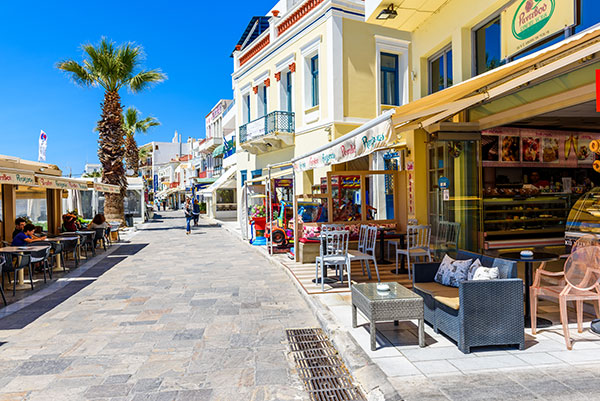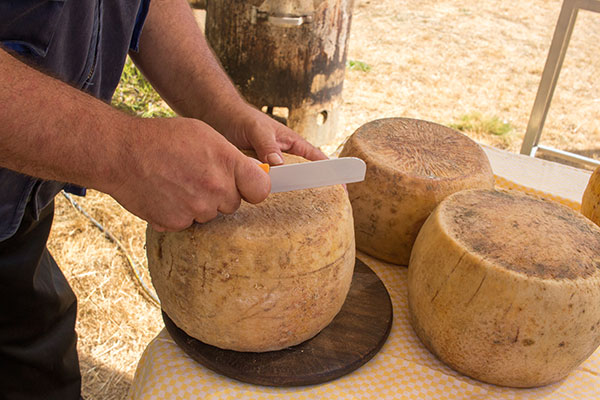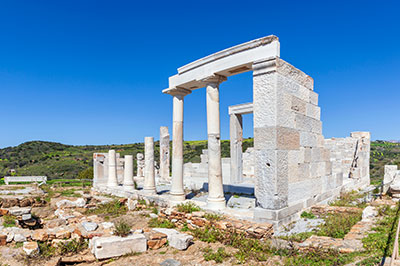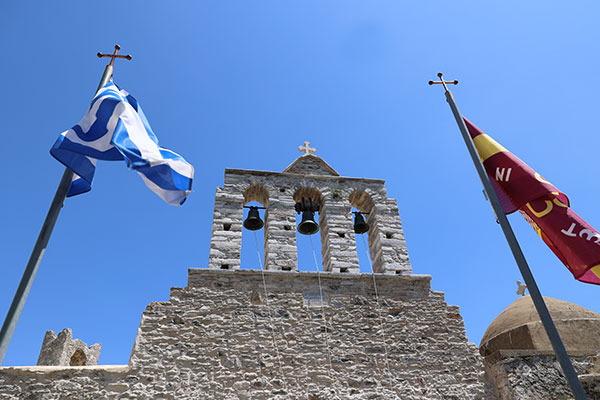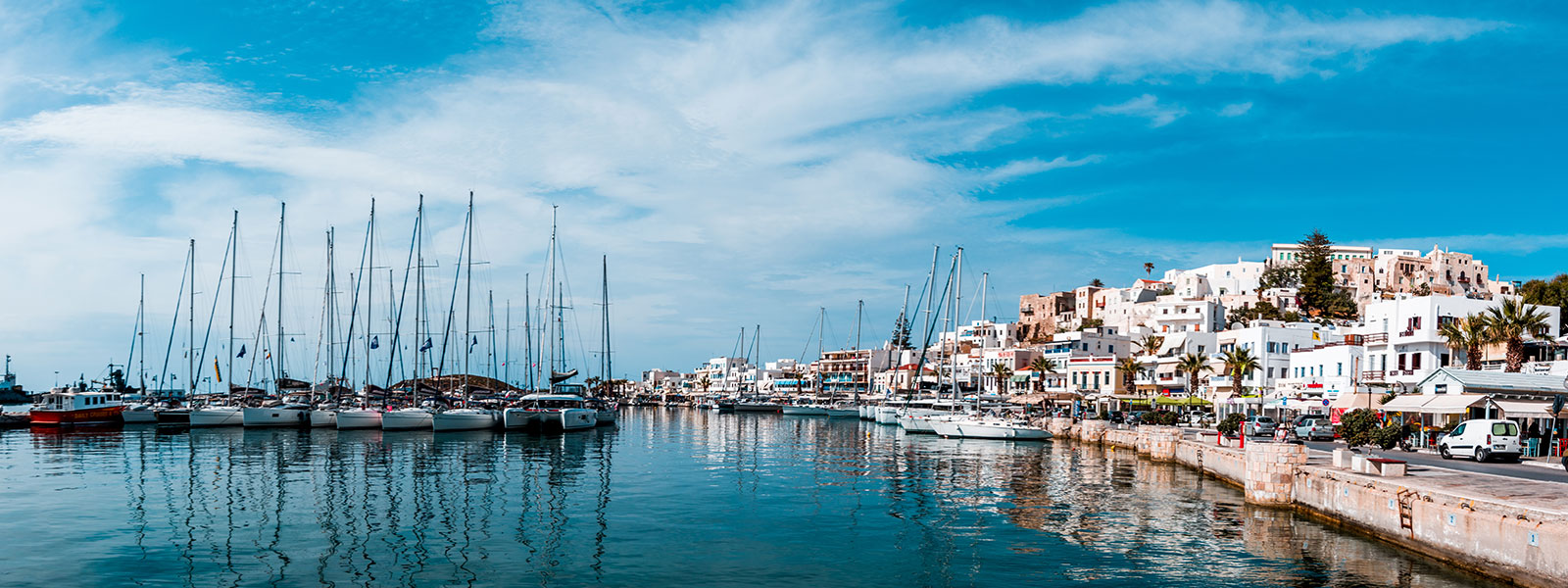Next is Naxos
This year think about stepping off the beaten track of the Grecian circuit of Mykonos-Santorini-Paros and into Naxos. Along with its unique combination of Cycladic tradition, Venetian past and ancient Greek monuments, this Greek island offers visitors impressive scenery, endless shores, gorgeous villages, and superb local cuisine.
With long sandy beaches, some cosmopolitan and others completely unexplored, stone-built villages and ancient ruins, natural beauty and history, and of, course, exquisite local cuisine, Naxos-the largest of the Cycladic islands that sits right in the centre of the group-vies for undivided attention.
The heart of the Aegean Sea, though lesser-known than neighbouring Mykonos, Paros and Santorini, Naxos is nonetheless one of the most enticing destinations in Greece. The island’s Venetian past is most visible in Hora, the main town, with the iconic Portara, the marble gateway to an unfinished temple dedicated to Apollo, standing impressively tall.
The Kastro castle and the old town stand at the top of Hora. And, when you enter it through the enormous, centuries-old wooden doors of the castle, you find yourself among whitewashed churches, Catholic monasteries and schools, the Archaeological Museum of Naxos, some of the oldest houses on the island, antique shops, beautiful cafes, and labyrinthine narrow paved alleys.
Walking through the alleys or even taking an elevator up, you can go up to the highest point of the castle and the 1739 Avaton café and wine bar. An open museum, since it is part of the Ursuline Monastery Boarding School which once upon a time educated girls of wealthy Catholic families, it is where a coffee or a drink accompanies what is a feast for the eyes-a panoramic view of Naxos.

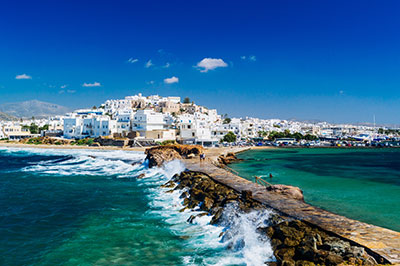
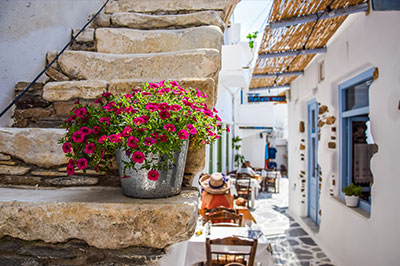
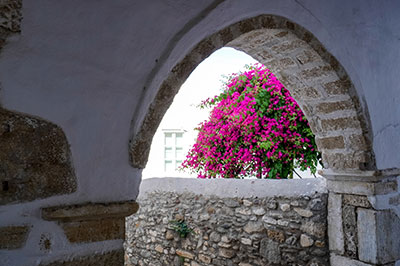
beaches and more
Apart from its impressive monuments, though, the island boasts of beautiful natural landscapes, as it is the greenest of the Cyclades. Imposing mountains, green valleys, beautiful beaches, and pretty villages together exalt the spirit. The best beaches are, of course, located in the southern shores, a long coastline with golden sand and turquoise waters.
Doubtlessly, the first stop is Agios Prokopios, a vast and stunning stretch of sand that has earned a Blue Flag Award multiple times and also listed among the best beaches in Greece and in Europe. The next would have to be Plaka, the longest sandy beach on the island with shallow blue waters, sunbeds, water sports, and restaurants. From here, following the seaside dirt track, you will reach one of Greece’s most magical settings-Mikri Vigla a surfer’s paradise that is ideal for calm holidays. For food, the Kontos taverna offers home-style dishes and cheese and vegetable produce while Victoria café is recommended for breakfast and great cocktails.
But there are many other beautiful sandy shores to explore on the island, especially in the area of Aliko which is a protected zone for its cedar forests. Aliko and Sahara are pure white, sandy beaches with crystal clear waters and will need to definitely be top on your bucket list.
Agia Anna is also delightful, featuring superb water and dunes and the famous Paradiso Taverna, whose emblematic tamarisk and decorative lighting creates a Felliniesque setting. It is like a meeting point for old and new friends from all over the world and here, between swimming and sunbathing and enjoying Greek ballads, you can enjoy a variety of fresh salads, greens, cheese pies, giant beans, papoutsakia, stuffed meat burgers, fresh fish, goat, roast pork and the local wine.
Then there is Kastraki, a seemingly endless beach with dunes and crystal-clear waters and here, the very good Axiotissa dishes up wonderful taverna fare such as oregano seasoned rabbit and a sensational kakavia soup made with assorted small fish.
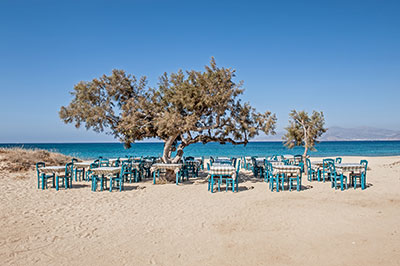
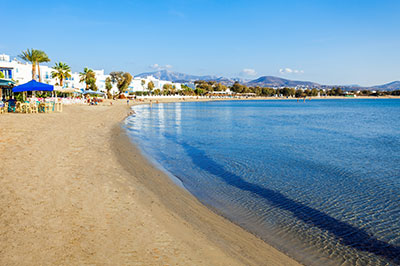
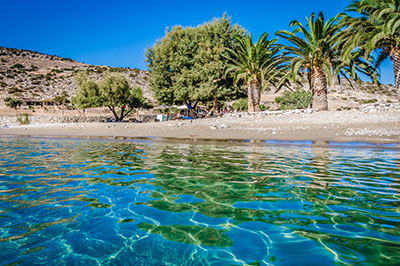
driving around
The best way to get a feel of the island is to drive around through its scattered villages and archaeological sites, churches tucked into the mountain site or even a windmill or two. The road towards the island’s mountainous interior goes through the village of Glynado where you will come upon Dal Professore, a restaurant that offers Italian cuisine with a Greek twist. From here, carry on to Sangri and the sanctuary of Demeter, the goddess of agriculture, that dates back to 6th century BCE. Consider a pit stop in the picturesque village of Halki at the Galanis café renowned for its galakto boureko, a custard filled pastry, and the 1896 Vallindras Distillery that boasts of a museum.
From here, drive to Apeiranthos, a traditional village with elegant stone paved alleys and houses with marble facades. Here, you can buy local products in Epilekton, a traditional bakery that sells sweet skalsounia pies with quince and walnut. From Apeiranthos, the road will take you through Moutsouna near where you can espy mining caves where emery was once loaded for export.
Heading south from here leads to the exquisite Psili Ammos beach and then Panermo, the entire route peppered with numerous coves with secluded beaches.
If you heading towards north Naxos, in the area of Melanes, there is an incomplete ancient kouros statue, the ancient aqueduct at Flerio and the medieval tower of the Jesuits. Next along the way is Eggares, with its informative Olive Press Museum that is one of Naxos’s oldest remaining olive mills dating to the late 1800s. The road then leads to Apollonas site of even larger incomplete kouros, measuring over 11 metres in length. From here keep going until you reach Koronos a very elegant and remote village nestled in the hillside. The first emery village of Naxos, Koronos is also home to one of the island’s best tavernas, Martina and Stavros, in an old school setting with traditional culinary delights.
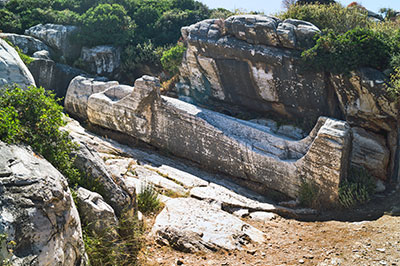
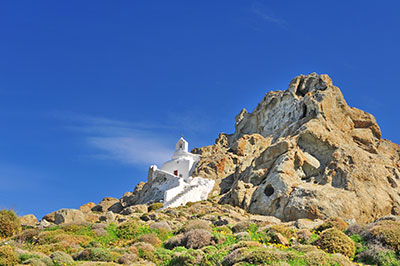
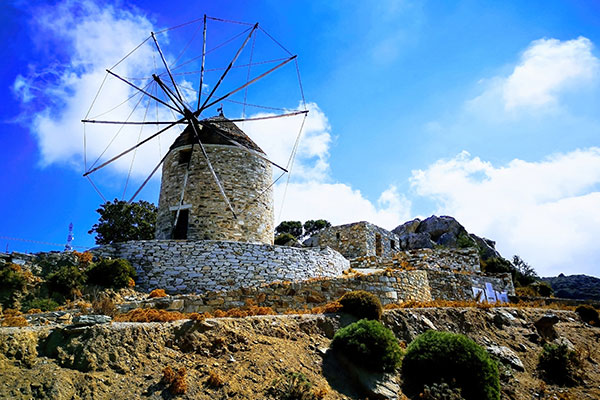
finally
From day one, you will fall in love with the culinary uniqueness of Naxian products. Naxos is a very fertile island and produces some of the most delicious vegetables, meat, fresh fish, seafood, and cheese (the famous graviera hard cheese is available at the Kaufopoulus store, a traditional grocery store that is a landmark on Papivasiliou Street) in Greece. And, if you want to take the secrets of Naxian cuisine back home, you can even attend cooking workshops that are held at Vassiliko or Vioma. Also, for wine lovers, a wine-tasting tour of the pocket-size Saint Anna Winery is a must!
Postscript: Other not-to-be-missed sights are the church of Panagia Drossiani, one of the oldest in the island, the monastery of Fotodotis Monastery that allows charming views of the neighbouring Donoussa island and the cerulean Aegean waters, and the deserted Jesuit Kalamitsia Monastery, surrounded by low hills and olive trees.
